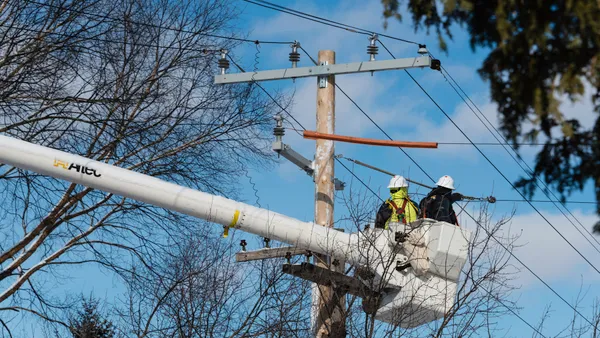Dive Brief:
- Despite record temperatures last week and a new peak demand record, the Electric Reliability Council of Texas said it was able to maintain service without conservation requests, which it required last summer. Large additions of renewables and battery storage, along with some new gas-fired generation, have made the difference, according to grid officials.
- More gas-fired generation is under development with state support. Developers of more than 38,000 MW of potential new generation have applied for low-interest loans under a state program voters authorized last year.
- Austin Energy said Sunday that the utility has completed a “permanent fix” at a substation in the southwest part of the city that failed Thursday night, briefly leaving 6,400 customers without power as a heat wave blanketed the area. The transformer failure was not the result of excessive heat or demand, the utility said.
Dive Insight:
“We’ve had a very different experience operating the ERCOT grid this summer,” Pablo Vegas, the grid operator’s CEO, told his board of directors last week.
The grid operator for most of Texas asked customers to conserve energy 11 times in summer and fall 2023.
While Texas has baked under triple-digit temperatures recently, this summer’s weather profile “has differed significantly” from last year’s, as the state avoided a repeat of last year’s heat dome, Vegas said. “In addition, we’ve seen the resource mix continue to evolve,” he said.
“Over the last year, we’ve seen significant additions of energy storage resources, solar resources and wind resources, with a few additions also on the thermal side, the gas side,” Vegas said. “All of that has helped to contribute to ... less scarcity conditions during the peak periods of summer, like we experienced last year.”
Texas has grown its solar resource base from about 12,000 MW in 2023 to 20,000 MW today, along with thousands of megawatts of batteries, Joshua Rhodes, a research scientist at the University of Texas at Austin, told NPR’s All Things Considered on Thursday.
That helped keep the lights on Tuesday, when ERCOT appeared to set a new peak demand record of 85,559 MW. The figure is preliminary until verified by market settlement data.
It is “pretty amazing ERCOT survived that heat wave and record demand, and with relatively low prices,” Grid Strategies President Rob Gramlich wrote on X. “Quickly connected new solar and storage really helped.”
Texas is also looking to add more gas-fired generation. Voters in November authorized the Texas Energy Fund for new dispatchable electric generation, and the state’s legislature appropriated $5 billion for low-interest loans for new generation. Staff of the Public Utility Commission of Texas, in an Aug. 8 memo, indicated they have received 72 applications seeking more than $24 billion in funding for projects representing over 38,000 MW of potential new generation.
Despite ERCOT’s steadiness, customers in Austin lost power when a transformer failed Thursday evening.
“Crews immediately responded and worked through the night to simultaneously investigate the cause of the outage and to re-route power to other circuits, restoring all customers within three hours,” the utility said yesterday.
Austin Energy did ask customers near the substation to conserve energy while repairs were made. The reduction in consumption, and an assist from slightly cooler temperatures the following day, meant “the temporary re-routing of power held up as technicians made permanent repairs to the transformer and brought it back online,” the utility said.














